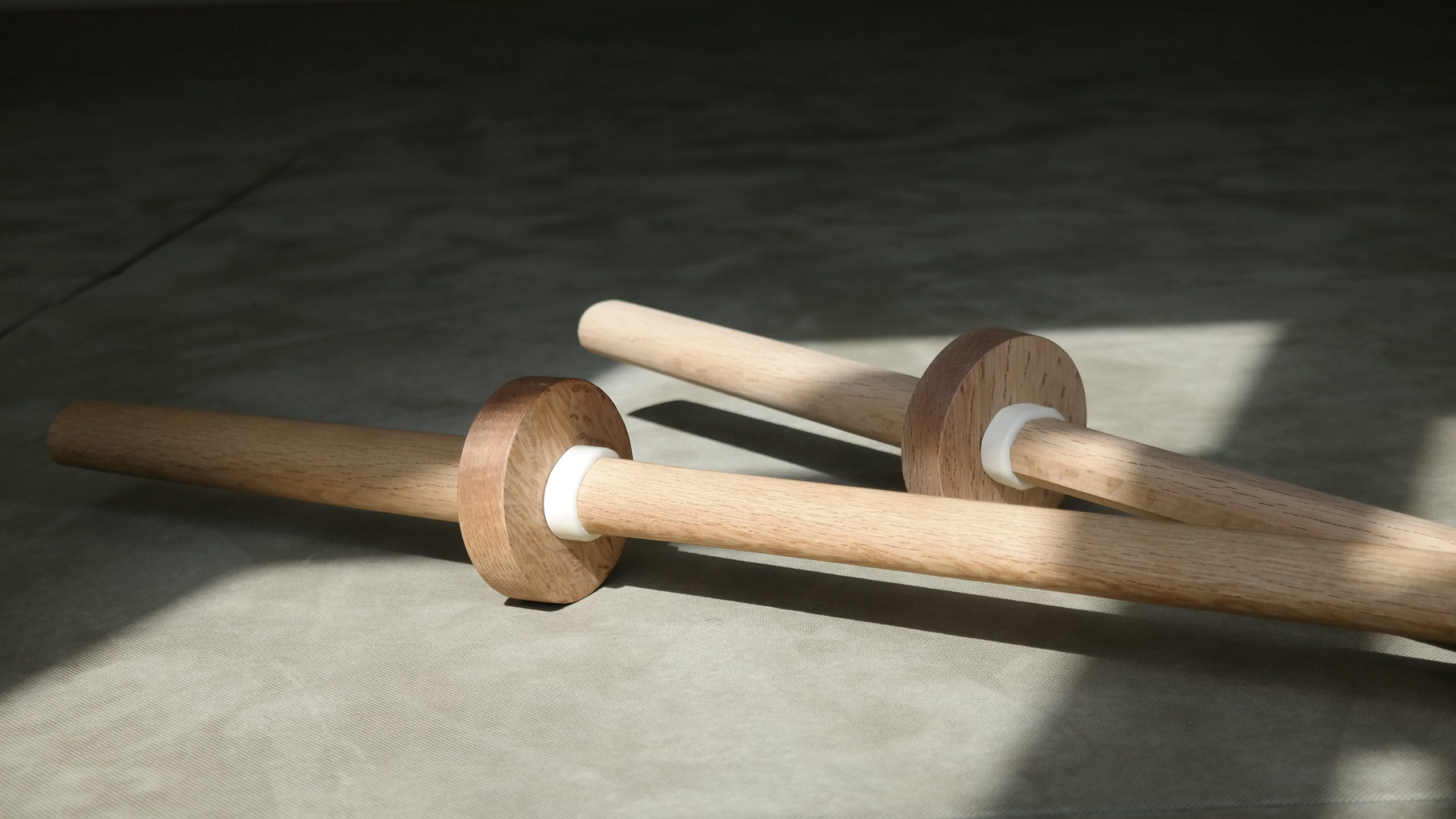Ken Jutsu
We practice Ken Jutsu with a wooden sword, the Boken or Bokuto ( 木刀, jap for wood and sword). Advanced students also practice with the Fukoru Shinai (袋竹刀), a bamboo sword covered with leather, as well as metal sw ords (Iaito and Shinken).

You don’t need any special equipment – comfortable sportswear is enough. We also train barefoot. We provide practice weapons. Everything else is explained by the trainer directly on site.
Book Ken Jutsu trial training now
In addition to unarmed training (tai jutsu), Aikido traditionally practices with weapons (buki jutsu). Ken Jutsu, fighting with the Japanese sword, plays an important role in this. The origin of many Aikido movements lies in the cutting movements of Ken Jutsu. Stance and foot positions also originate there. Aikido training and Ken Jutsu cross-fertilize each other and are often practiced together.
The basic training focuses on the correct handling of the sword. We practice basic attacks in a relaxed manner as well as the appropriate reaction to them. As in every Budo discipline, the practice of fixed sequences of movements, the Kata (形), is also important in Ken Jutsu. Katas differ depending on the Ken Jutsu school (style). Firstly, we practice Aiki-Ken sword techniques taught by the founder of Aikido Morihei Ueshiba. In addition, we mainly follow the Kashima-no Tachi Ken-Jutsu style as taught at the Shiseikan Dojo in Tokyo, Japan.
Training content
Basic sword training
- Breath and relaxation in basic strokes
- Correctly wielding the sword
- Training basic attacks
- The first katas of the Kashima no tachi school
- Applications of the cata
- Aiki-Ken
Intensive sword training
- Precision and reaction training
- Suburi training, mental endurance
- The 5 series of the Kashima no tachi school
- Applications of the cata
- Batto Jutsu, the unity of sword drawing and cutting
- Shinkentachi, practicing with the metal sword

The Aikido Zentrum Offenbach is a member of the International Shiseikan Budo Association (ISBA) a European association of Aikido and Kenjutsu Dojos, which promotes regular international exchange with Japanese teachers of Shiseikan Budo.
Our sword teacher Markus Röllig has over 20 years of experience in Aiki-Ken and Ken Jutsu and has participated in many international seminars and trainings, among others in the Shiseikan Dojo, the Meiji Jingu in Tokyo, as well as in the Hombu Dojo Tokyo, the central dojo of the international Aikido Federation Aikikai.
Ken Jutsu and Budo
Ken Jutsu (剣術) is Japanese and refers to the art of sword fighting and teaches the use of the Japanese long sword, the katana (刀), and the short sword, the wakizashi (脇差 : engl. “carried at the side” or also 小刀, engl. “small sword”). The shape of Japanese swords (curved and single-edged) leads to mainly cutting and pulling movements. Ken Jutsu, unlike Kendo, has no competition orientation, but is one of the central components of Budo ( 武道, German: “Militärweg, Kriegsweg”). The core of Budo is preparation for war. So what is the role of Budo in today’s peaceful times? Hardly anyone today has to expect to go into battle to defend the interests of his master, or his country.
Nevertheless, the practice of Budo today is perhaps more important than ever. In Budo we prepare for the fight. We must ask ourselves what is so important to us in life that we are willing to fight for it. What would we risk our lives for ? Our family? Our career? These are important questions and Budo provides us with a framework to address them. Therefore, Budo cannot be equated with martial arts. In sports, it’s always about winning, but you can’t beat life. We all have a life time and this time wants to be used well. This is the core of Budo.
The Ken Jutsu and Aikido training help us to do this. We learn to focus, not to be distracted by trivialities. We keep our eye on the target and we look for a way to the target. In Aikido we learn strategies to avoid fighting unnecessary battles and to be strong and prepared when it matters. In Ken Jutsu we sharpen our minds and practice looking into the abyss. When you face each other with two swords, you have to be awake and ready for anything.
Kashima No Tachi Ken Jutsu
In the Kashima No Tachi Ken Jutsu style, based on one of the oldest sword schools in Japan, Ko-ryu Kashima-shin-ryu, the modern opening of Budo to foreign countries is combined with traditional training. Dating back to the samurai Matsumoto Bizen-no-kami (1467-1524), the sword forms of the Kashima sword have proven themselves time and again over the past 500 years and have been further refined. This great authenticity can be felt when practicing together, and is preserved and passed on by us. The spirit of Kashima No Tachi is palpable in the following two short videos recorded at recent ISBA summer seminars.
